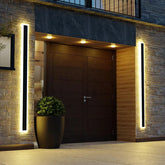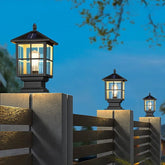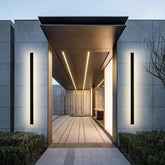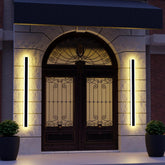Rechargeable Wall Lights: A Modern Solution for Flexible Lighting

The Growing Demand for Cordless Lighting
In today’s world, where flexibility, convenience, and style define modern living, the rechargeable wall light has become a highly desirable home accessory. Unlike traditional wall fixtures that require fixed wiring, rechargeable wall lights operate without cords or permanent connections. This innovation offers homeowners and renters alike the freedom to illuminate spaces without structural modifications.
The popularity of rechargeable wall lighting reflects broader lifestyle trends. People want adaptable homes that can be reconfigured with ease, whether for working remotely, reading in bed, or entertaining outdoors. A rechargeable wall light is more than a utility—it is a blend of technology, design, and practicality.
Why Choose a Rechargeable Wall Light?
Freedom from Wiring
Traditional wall lights often require drilling, wiring, and professional installation. A rechargeable wall light, however, can be mounted anywhere with minimal effort. This is especially beneficial for renters who may not want to alter their walls permanently.
Portability and Convenience
Rechargeable wall lights can be relocated easily. From bedrooms to hallways, or even outdoors for temporary use, they adapt to different settings without the hassle of rewiring.
Style Meets Technology
Modern rechargeable wall lights are available in sleek, stylish designs that complement contemporary interiors. With finishes ranging from matte black and brushed steel to minimalist white, they offer elegance in addition to functionality.
Eco-Friendly Efficiency
Most rechargeable wall lights use LED technology, which is both energy-efficient and long-lasting. The rechargeable batteries further reduce waste by eliminating the need for disposable replacements.
How Rechargeable Wall Lights Work
A rechargeable wall light typically includes built-in LED bulbs powered by rechargeable lithium-ion batteries. These batteries are charged via USB cables, docking stations, or even solar panels in some advanced models. Once fully charged, the lights can last anywhere from several hours to days, depending on brightness settings and usage.
Some models also include motion sensors, dimmers, or smart technology that allows users to control them via mobile apps or voice assistants. This combination of practicality and innovation makes rechargeable wall lights stand out as future-ready lighting solutions.
Popular Uses of Rechargeable Wall Lights
Bedrooms
In bedrooms, rechargeable wall lights often serve as reading lamps mounted beside beds. Their cordless design keeps nightstands clutter-free while offering targeted light for evening routines.
Hallways and Stairs
Motion-sensor rechargeable wall lights improve safety in hallways and staircases. They provide illumination only when needed, conserving battery power while enhancing convenience.
Home Offices
For remote workers, rechargeable wall lighting offers flexibility. They can be mounted or moved to create task lighting for desks, video calls, or study areas.
Outdoor Use
Rechargeable wall lights can be temporarily placed outdoors for patios, gardens, or camping trips. Weather-resistant models expand their usability, offering both ambience and practicality outside.
Children’s Rooms
Rechargeable wall lights are ideal for children’s rooms since they eliminate dangling cords that pose safety risks. Soft, dimmable lights can act as nightlights, giving children comfort without disturbing sleep.
Styles and Designs of Rechargeable Wall Lights
Minimalist Designs
Sleek and compact, minimalist rechargeable wall lights blend seamlessly with modern interiors. Their simplicity complements clean lines and uncluttered décor.
Decorative Fixtures
For those who value aesthetics as much as function, decorative rechargeable wall lights feature elegant finishes, textured materials, and artistic shapes that double as wall art.
Adjustable and Rotating Models
Some rechargeable wall lights come with rotating heads or adjustable arms, allowing users to direct light exactly where it’s needed. These designs are especially popular in reading areas and workspaces.
Smart Rechargeable Wall Lights
With built-in smart technology, these lights can be controlled remotely, programmed for schedules, or synced with other smart devices. Their convenience makes them a favorite in tech-savvy homes.
Advantages of Rechargeable Wall Lights
Easy Installation
Most rechargeable wall lights require no drilling or wiring. They can be mounted using adhesive strips, magnetic bases, or screws, depending on the model.
Cost-Effective
By eliminating installation fees and reducing electricity consumption, rechargeable wall lights provide a cost-effective solution for modern households.
Adaptability
Their portability allows homeowners to move lights from room to room depending on need, ensuring maximum usability from a single fixture.
Energy Saving
The combination of LED technology and rechargeable batteries ensures lower energy use, reducing both costs and environmental impact.
Installation and Maintenance
Installing a rechargeable wall light is simple. Many models attach with adhesive pads or magnetic mounts, making them renter-friendly. Maintenance typically involves periodic charging, cleaning, and ensuring batteries are not over-discharged.
Battery lifespans vary, but with proper care, rechargeable wall lights can last for years before requiring replacement batteries. Some premium models even include replaceable or upgradable battery packs.
How Rechargeable Wall Lights Enhance Lifestyle
Flexible Living
Modern lifestyles demand adaptable solutions. Whether working late in a home office, reading in bed, or creating ambience for a dinner party, a rechargeable wall light adapts effortlessly.
Safety Benefits
Cordless designs eliminate tripping hazards, making them safer for households with children or elderly residents. Motion-sensor options also increase nighttime safety by lighting pathways automatically.
Aesthetic Value
Far from being purely functional, modern rechargeable wall lights enhance décor. Their slim profiles and decorative designs contribute to interior styling while fulfilling lighting needs.
Comparison with Traditional Wall Lights
Traditional wall fixtures require permanent installation and wiring. They offer continuous power but lack the flexibility of cordless models. A rechargeable wall light, in contrast, provides mobility, easy installation, and energy efficiency.
While traditional fixtures may still suit spaces requiring constant, high-intensity illumination, rechargeable lights excel in flexibility and sustainability. This distinction explains why so many households now integrate both types for a balanced approach.
Why Every Home Needs a Rechargeable Wall Light
Rechargeable wall lights embody the values of modern design: flexibility, efficiency, and style. They make life easier by offering portable illumination that adapts to changing needs. Whether used for practical safety, decorative ambience, or convenient reading, they provide unmatched versatility.
By choosing the right rechargeable wall light, homeowners can achieve a balance between functionality and design, ensuring that their living spaces are not only well-lit but also contemporary, safe, and sustainable.
FAQs
How long does a rechargeable wall light last on a full charge?
Most models last between 6 and 48 hours, depending on brightness levels, battery capacity, and usage frequency.
Can rechargeable wall lights be used outdoors?
Yes. Many models are weather-resistant and can be used for patios, gardens, or camping, though exposure limits vary by design.
How do you install a rechargeable wall light?
Most can be installed with adhesive strips, magnets, or simple screws. They require no wiring, making them renter-friendly and portable.
Are rechargeable wall lights energy efficient?
Yes. They use LED technology combined with rechargeable batteries, making them highly efficient and eco-friendly.
Do rechargeable wall lights replace traditional wall lights completely?
Not always. While they are versatile and flexible, traditional wired fixtures may still be necessary for constant, high-intensity lighting needs.








